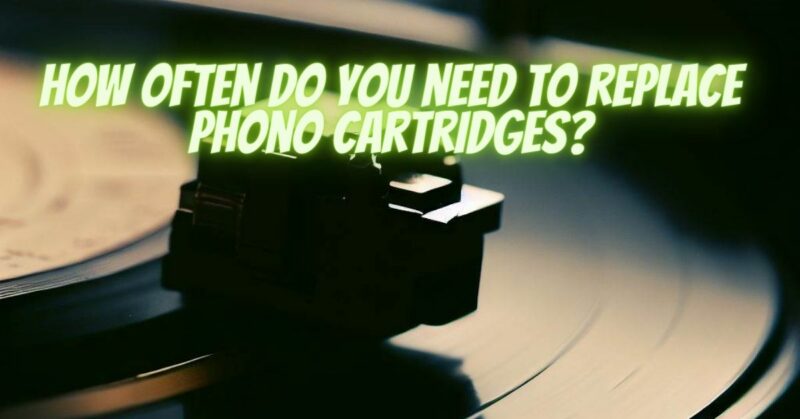Phono cartridges, the small components responsible for reading the grooves of vinyl records, play a crucial role in your turntable’s performance. Over time, these cartridges can experience wear and tear, affecting sound quality and potentially damaging your vinyl records. In this article, we’ll discuss the recommended frequency for replacing phono cartridges and the signs that indicate it’s time for a replacement.
Understanding Phono Cartridges
Phono cartridges consist of a stylus (needle), cantilever, and a generator. The stylus is the part that comes into direct contact with the grooves of your vinyl records, translating the physical movements into electrical signals that your amplifier amplifies into sound. Given their delicate nature, phono cartridges require periodic attention.
When to Replace a Phono Cartridge
The frequency of replacing a phono cartridge depends on several factors:
- Usage: How often and for how long you use your turntable plays a significant role. Frequent and extended use may result in quicker wear and tear.
- Type of Records: The condition of your vinyl records can impact the lifespan of a phono cartridge. Scratched or dirty records can accelerate wear.
- Cartridge Quality: High-quality cartridges are built to last longer, but even they will eventually need replacement.
- Tracking Force: Properly setting and maintaining the tracking force (the pressure the stylus applies to the record) can extend the cartridge’s life.
Generally, a well-maintained phono cartridge can last anywhere from 1,000 to 2,000 hours of playtime. This equates to several years of regular use for most vinyl enthusiasts.
Signs That It’s Time to Replace Your Phono Cartridge
While there’s no strict rule regarding replacement frequency, several signs indicate it’s time to consider a new phono cartridge:
- Audible Deterioration: If you notice a decline in sound quality, such as reduced clarity, distorted sound, or excessive surface noise, it may be due to a worn-out stylus.
- Skipping or Tracking Issues: Frequent skips, difficulty tracking the grooves, or the stylus jumping out of the grooves are all signs of cartridge wear.
- Excessive Record Wear: If your records are showing accelerated wear, visible groove damage, or increased dust buildup, the cartridge may be at fault.
- Visible Stylus Wear: Inspect the stylus with a magnifying glass or a stylus microscope. If you see significant wear, chipping, or flattening, it’s time for a replacement.
Routine Maintenance to Extend Cartridge Life
To maximize the lifespan of your phono cartridge, follow these maintenance tips:
- Clean Records: Keep your vinyl records clean to reduce the risk of debris damaging the stylus.
- Proper Setup: Ensure your turntable is correctly set up, including tracking force, anti-skate, and azimuth adjustments.
- Handle Records Carefully: Avoid mishandling records, and always handle them by the edges to prevent damage.
- Regular Cleaning: Clean your stylus regularly using a soft brush or a stylus cleaning solution to remove dust and debris.
While the lifespan of a phono cartridge can vary depending on usage and care, a general guideline of 1,000 to 2,000 hours of playtime is a good reference. However, it’s essential to pay attention to the signs of wear and deterioration and replace your phono cartridge when necessary. Regular maintenance and careful handling of your vinyl records and equipment can help extend the life of your cartridge and ensure your vinyl listening experience remains enjoyable for years to come.


